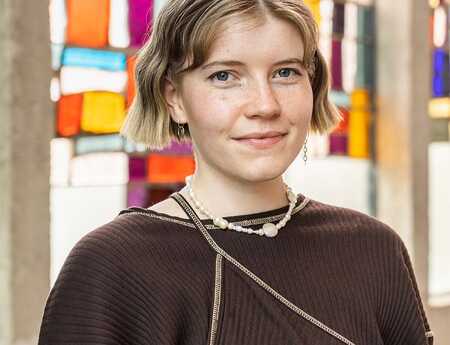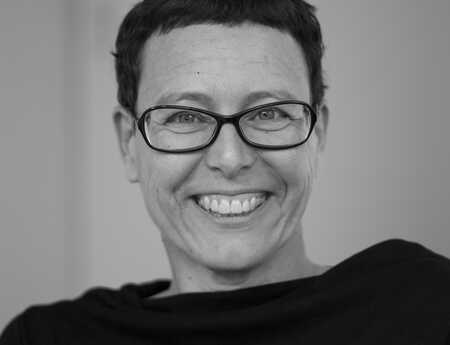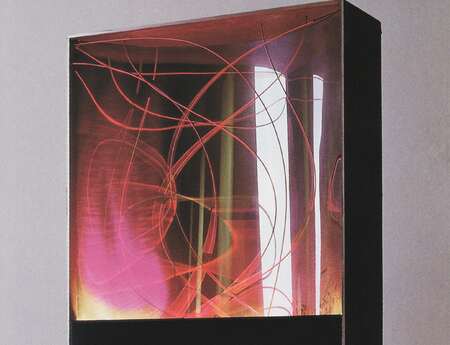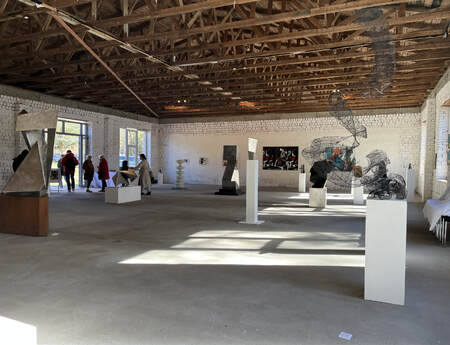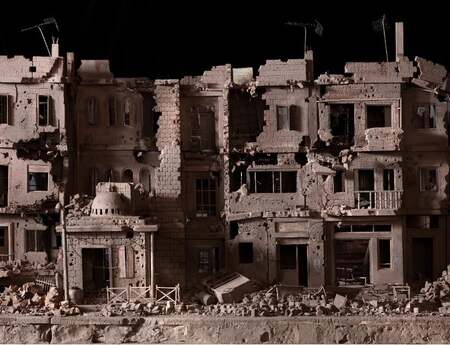Surveying Desire: Geo-therapies for Alternative Futures
If the Earth is a body, the artists from New Mineral Collective prescribe massage, acupuncture, and relaxation treatments to heal its ailments. In doing so, they allow us to speculate on how we can move towards a new relationship with the Earth – one that is based on reciprocity and care.
New Mineral Collective, formed in 2012, is the collaborative artistic practice of Canadian artist Tanya Busse (*1981) and Lithuanian artist Emilija Škarnulytė (*1987). A central thread in their practice is the relationship between radical geology, contested landscapes, and the body. Through photography, film, and sculptural installation, the artists look at contemporary landscape politics to better understand the nature and extent of human interaction with the Earth’s surface. In this new work, Surveying Desire, they offer “geo-therapies” in the form of acupuncture and sensory deprivation salt bath bombs to soothe the scars of the earth left by over-extraction, pollution, and colonial borders.
In the grand hall of Salzburger Kunstverein, New Mineral Collective presents their new sculptural installation, Surveying Desire. Dark blue carpet covers the gallery floor, and the room is bathed in soft aquamarine light, giving the feeling of being underwater (or perhaps in an underground salt mine). As visitors step into the installation, they are leaving the institution and entering into a new landscape.
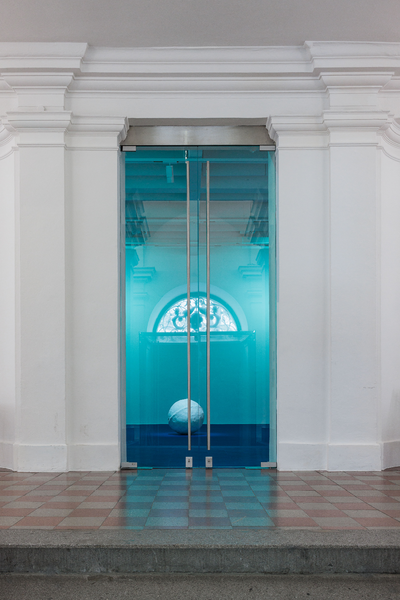
Inside, nine six-meter acupuncture needles pierce the gallery. Interspersed between the needles are five large bath bombs made of salt. Both sculptures are large-scale representations of popular treatments in the wellness and self-care industries today. The needles reference the practice of acupuncture, a traditional Chinese therapeutic technique that involves inserting fine needles into specific parts of the body to alleviate energy blockages. The salt bath bombs evoke sensory deprivation, a practice that removes normal sensory stimulation for experimental or therapeutic purposes.
The sculptural interventions operate as both metaphorical and literal tools, probing the Earth’s geophysical and geopolitical wounds while imagining speculative futures beyond capitalist extraction.

In Surveying Desire, the acupuncture needles pierce the institution, marking the site as a contested landscape where there are blockages of energies in the form of environmental, political, or socioeconomic pressure points. The geophysical wounds of the landscape can be traced back to the origins of the place we now know as Salzburg, referencing the long history of salt mining that has significantly contributed to the region’s wealth and development.
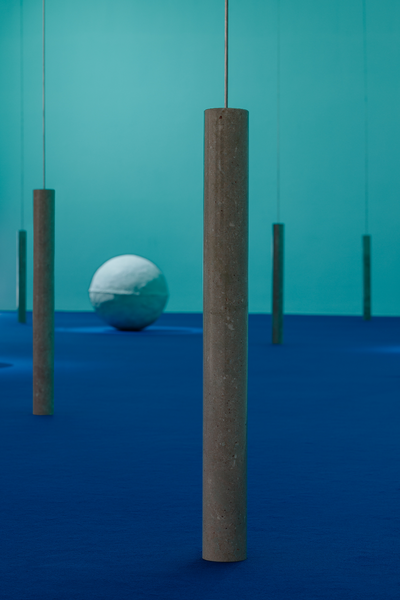
The effects of this trade are visible in the sprawling Baroque architecture of the region. Yet Surveying Desire draws our attention to the often unseen impacts of extractivism. The acupuncture sculptures address the scars left by extracted salty sites in an attempt to heal the land. Excavated sites that stretch hundreds of meters below ground are treated as “geo-traumas” or wounds. The sculptures invite us to rethink our relationship to the landscape and to question the legacy this industry leaves on the environment.
The salt-based bath bombs are a direct reference to this history. They can be understood as both a critique of this salty history and an antidote for the landscape. Their exaggerated scale emphasizes the magnitude at which minerals are extracted from the Earth, yet they are also designed as cleansing tools for contaminated bodies of water.
These sculptures repurpose extractivist technologies and data to create tools of healing that allow us to speculate on alternative futures that prioritize care and healing. Surveying Desire serves as a call to redirect our capitalism-driven desires and adjust the scales at which we view the world.
Surveying Desire is currently on view at Salzburger Kunstverein until May 4th. The exhibition is curated by Mirela Baciak and is part of Salzburger Kunstverein’s 2025 Picturing Justice program. Surveying Desire is commissioned and produced by Salzburger Kunstverein. The exhibition is financially supported by the Office for Contemporary Art (OCA) Norway. Presented in conjunction with the exhibition The Pleasure Report at Mercer Union in Toronto.
—----------------------
Myfanwy Halton wrote this text in English.

